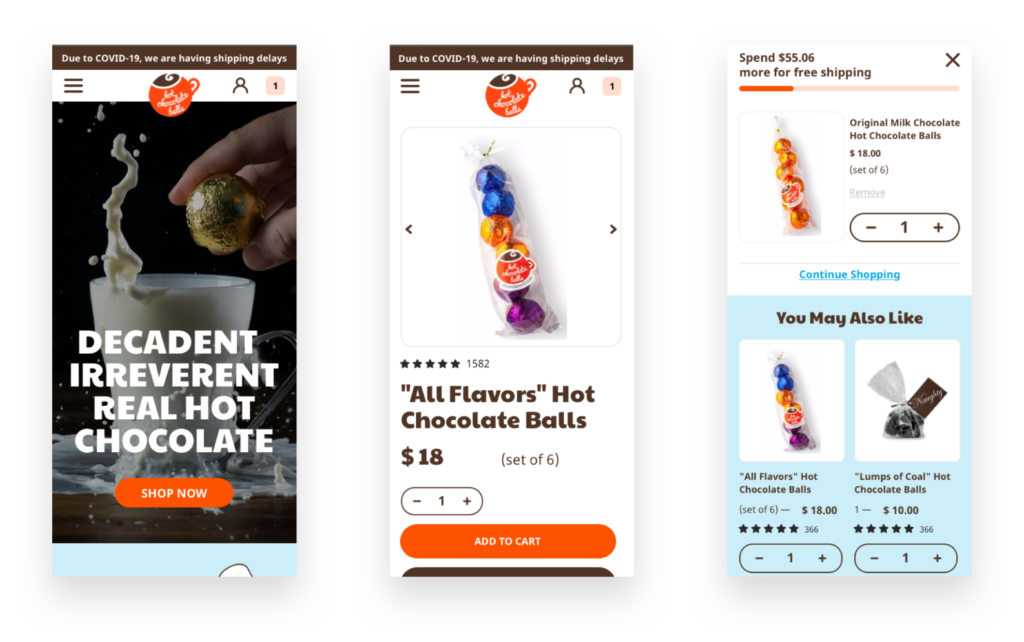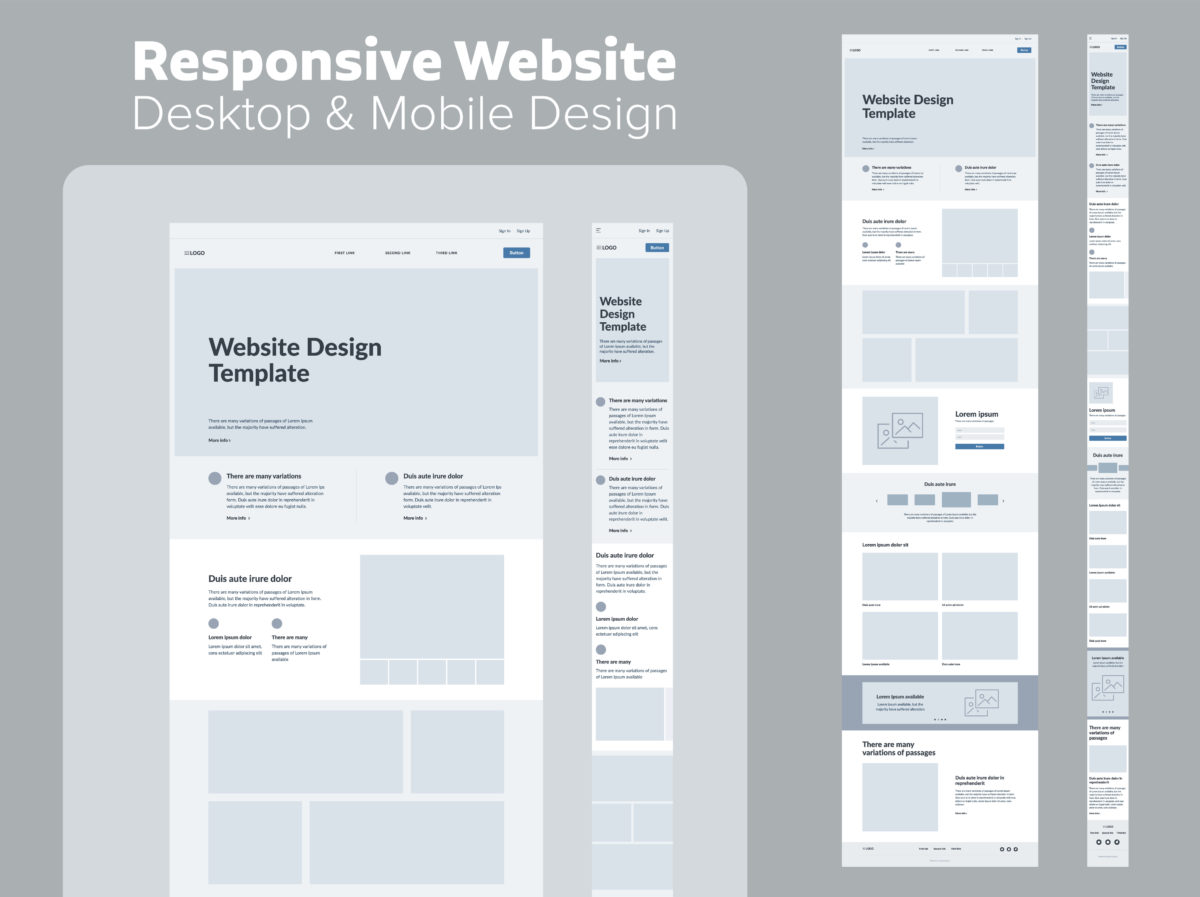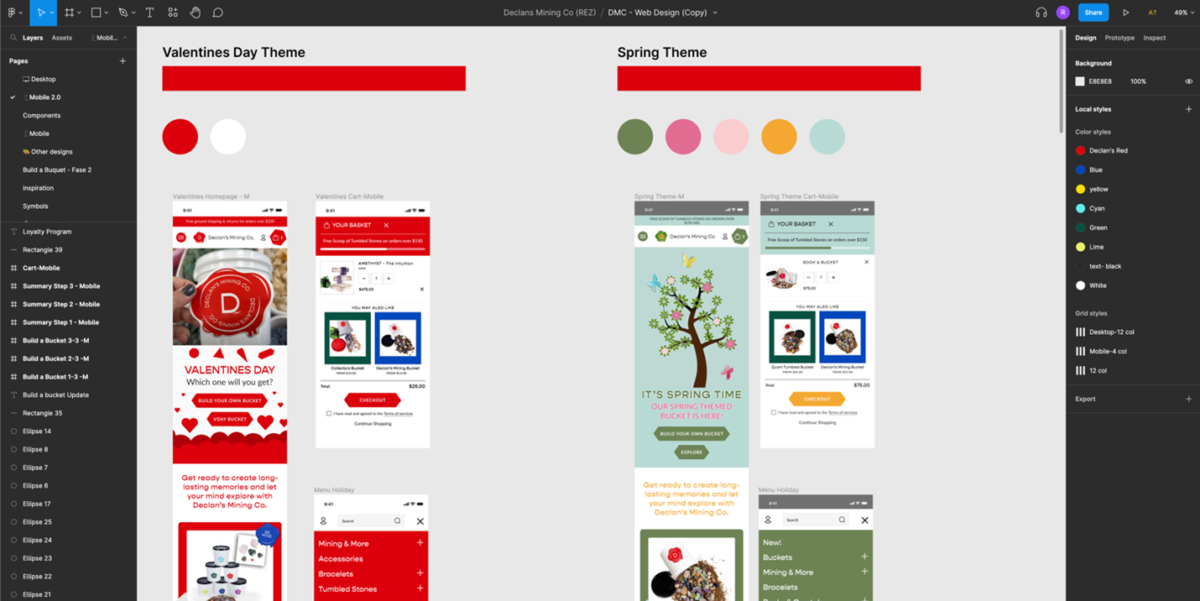In today’s digital age, eCommerce web design is absolutely an important part of any online business. With the growth of online shopping, the need for an attractive and user-friendly eCommerce website is more important than ever.
In this article, we will explain what eCommerce web design is and how it can benefit your business. We will also provide you with the best practices for creating a successful eCommerce website.
What Is E-commerce Web Design?
E-commerce web design is the process of creating an online store that provides users with a seamless and enjoyable shopping experience. The design and functionality of the website are crucial to creating a positive user experience. When designing an eCommerce website, it is important to consider the user’s journey from the moment they land on your site to the moment they complete their purchase.
Why Is E-commerce Web Design Important For Your Business?
Your eCommerce website design is critical to the success of your online business. A well-designed website will help you attract more customers and increase sales. Here are some of the benefits of eCommerce web design:
- Attracting and retaining customers: A well-designed eCommerce website will attract more customers and keep them engaged on your site for longer.
- Creating a positive user experience: By creating an intuitive and easy-to-use website, you can provide a positive user experience that will keep customers coming back.
- Increasing conversions: By optimizing your website’s design and functionality, you can increase the likelihood that visitors will convert to customers.
Best Practices For E-commerce Web Design
Design for User Experience
One of the best practices for eCommerce web design is to prioritize the user experience (UX) of your site. This means ensuring that customers can easily locate the products they desire and finalize their transactions. An effective UX design should:
Prioritize website usability by making it easy for users to find what they’re looking for:
- Use clear and concise language and provide straightforward navigation
- Make sure your website is fast and responsive
- Optimize the checkout process to reduce cart abandonment
- Focus on making the website easy to use and navigate
- Prioritize the placement of important elements on the page
- Test the user experience with real users to identify areas for improvement
Implement Mobile-first Design
With mobile accounting for the majority of online purchases, eCommerce web designers must ensure their sites are optimized for mobile devices. This means designing a website that is responsive to different screen sizes and devices, as well as implementing features such as touch-friendly navigation.
- Use responsive design to ensure the site works well on all devices
- Prioritize the design and functionality for mobile devices
- Keep load times as short as possible
- Consider using a mobile app in addition to a mobile-friendly website
- Use touch-friendly design elements, such as large buttons and swipe gestures
 Use High-quality Product Visualizations
Use High-quality Product Visualizations
High-quality product images are a critical component of eCommerce web design. This means providing multiple images that showcase products from different angles and using interactive product visualizations like 360-degree views or virtual try-on experiences. By providing customers with engaging product visualizations, you can help them make more informed purchasing decisions and increase your conversion rates.
- Include multiple high-quality images for each product
- Offer 360-degree product views if possible
- Use videos to showcase the product in use or demonstrate how it works
- Allow customers to zoom in and see details of the product
Focus on Personalization
Personalization is a key trend in eCommerce web design and can significantly impact the customer experience. To provide a personalized experience, use customer data to recommend products and content based on their interests and preferences.
Other strategies include:
- Gather data about customers’ preferences, behavior, and purchase history.
- Use machine learning and AI to analyze the data and personalize product recommendations, offers, and promotions.
- Personalize email newsletters, abandoned cart emails, and product pages to increase engagement and conversion rates.
- Allow customers to customize their shopping experience by offering options such as personalized recommendations, saved carts, and wish lists.
- Use customer feedback to improve personalization and refine the customer experience over time.
- Use dynamic pricing to provide personalized discounts or promotions based on the customer’s behavior
Optimize for Search Engines
SEO is perhaps the most important factor in eCommerce web design, as it can significantly impact your website’s visibility and search engine rankings. To optimize for SEO, focus on creating content that is keyword-rich and engaging, as well as making sure your website is properly coded and structured for search engines.
- Conduct keyword research to understand what customers are searching for and what terms are relevant to your products.
- Optimize product titles, descriptions, and tags with relevant keywords and meta data.
- Ensure your website structure is search engine friendly with clear navigation and a sitemap.
- Optimize your website speed and mobile responsiveness to improve search engine rankings.
- Utilize link-building strategies to increase your website’s domain authority and improve search engine rankings.
- Use schema markup to provide context for search engines
- Ramp up voice search by using natural language and long-tail keywords
Provide Exceptional Customer Support
Customer support can make or break your brand, so it’s essential to provide customers with exceptional support. Provide multiple channels for customer services, such as email, phone, and live chat. Additionally, use automated customer service tools to provide personalized responses and support. Other out-of-the-box strategies include:
- Offer multiple communication channels for customers to reach out for support, such as email, phone, chat, and social media.
- Respond to customers’ inquiries and issues promptly and with empathy and understanding.
- Offer self-help resources such as FAQs, knowledge bases, and video tutorials to help customers find solutions to common problems.
- Train your support team to handle complex issues and provide personalized solutions.
- Provide opportunities for customers to provide feedback and reviews.
- Use customer feedback to continuously improve your website and customer experience.
- Use bots or other automated tools to provide quick and efficient support.
Trends to Watch In E-commerce Web Design
 Here are some of the top eCommerce web design 2023 trends to look out for:
Here are some of the top eCommerce web design 2023 trends to look out for:
- Personalization: E-commerce websites will be designed to personalize the user experience, offering tailored content and product recommendations based on the user’s behavior, location, and previous purchases.
- Voice search optimization: As more users use voice assistants to browse the internet, Ecommerce websites will be designed with voice search optimization in mind, ensuring that the website’s content and product descriptions are optimized for voice search queries.
- Mobile-first design: With the majority of online shopping now taking place on mobile devices, E-commerce websites will prioritize mobile-first design to ensure a seamless user experience for mobile users.
- Augmented Reality (AR) integration: AR technology will be integrated into Ecommerce websites, allowing users to visualize products in real-time, such as trying on clothes or seeing how furniture would look in their homes.
- Minimalist design: Minimalist design will continue to be popular in Ecommerce web design, with a focus on clean, simple layouts that prioritize product images and descriptions.
- Social commerce: E-commerce websites will increasingly integrate social commerce features, such as shoppable posts and social media ads, to make it easier for users to discover and purchase products through social media platforms.
- Sustainability and ethical design: With consumers increasingly concerned about sustainability and ethical practices, E-commerce websites will need to design their websites with these values in mind, including highlighting eco-friendly products and production processes.
- 3D design: 3D design will become more prevalent in Ecommerce web design, allowing users to view products from all angles and get a better sense of their size and dimensions.
- Fast loading speed: With attention spans getting shorter, Ecommerce websites will need to prioritize fast loading speed to ensure that users don’t abandon the website before making a purchase.
- Artificial Intelligence (AI) and machine learning: E-commerce websites will increasingly use AI and machine learning to personalize the user experience, optimize product recommendations, and improve the overall user journey.
- Growth of subscription-based services and models: Subscription-based services and models will become more popular in Ecommerce, allowing customers to easily make recurring purchases.
By following these best practices and keeping up with emerging trends, you can create exceptional online shopping experiences that attract and retain customers.
Conclusion
E-commerce web design is a critical component of any successful online business. By following best practices and focusing on the user experience, you can create a website that will attract and retain customers, increase conversions, and drive sales.
Remember to keep your website mobile-responsive, easy to navigate, and secure, with high-quality product images and clear calls to action. Talk to us today to learn how we can help propel your brand and solidify your market position using throughtful, tried, and tested web design solutions.
















 Use High-quality Product Visualizations
Use High-quality Product Visualizations





